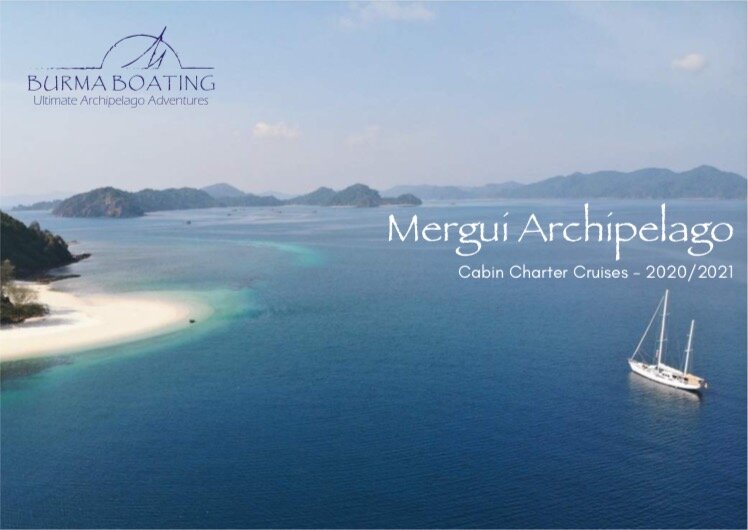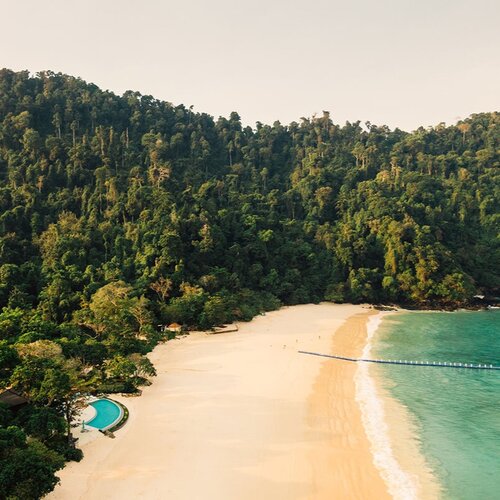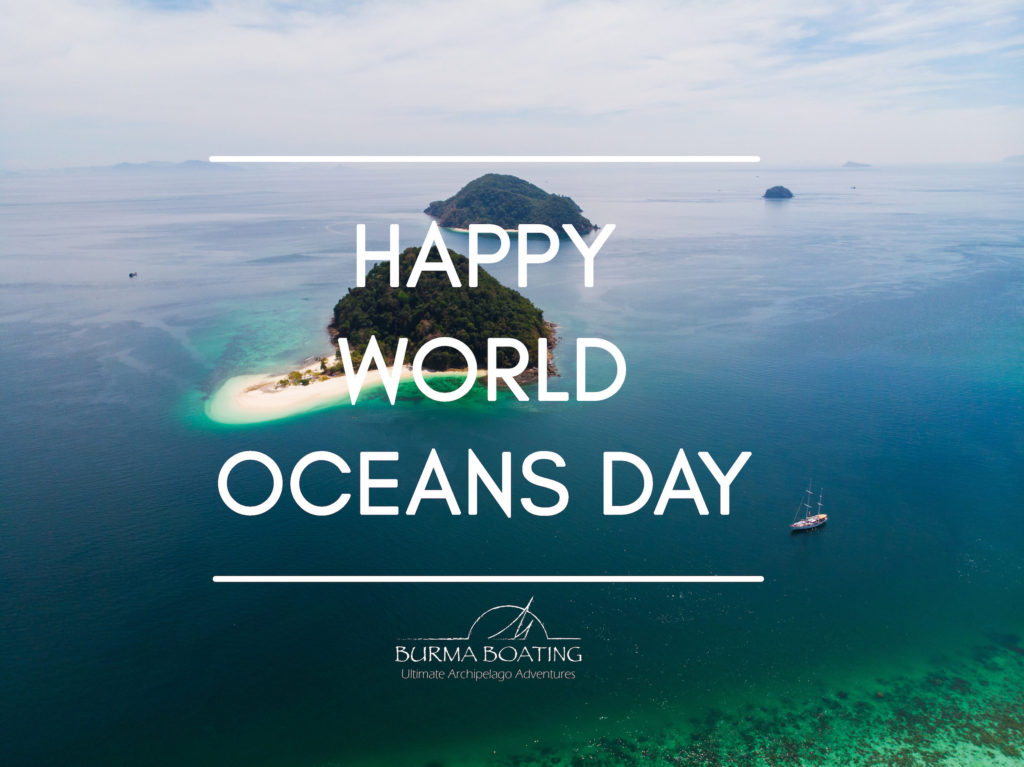10 Beautiful Ancient Maps and Charts of Myanmar
10 Beautiful Ancient Maps and Charts of Myanmar
August 09, 2015 in Myanmar, The Sea, Mergui
Sailing the oceans of the world used to be a dangerous adventure, as the captains often only had a rough idea where their journey would take them. Without GPS and modern navigation, they had to rely on the stars and the stories they heard to find their route. At Burma Boating, we love ancient maps as they tell the stories of the seas’ early explorers and their journeys into the unknown. Here are some of our favourite maps and charts of Myanmar, formerly known as Pegu.

Detailed regional map of the region from India, Tibet and China to the Gulf of Siam and the Gulf of Bengal, showing the travels of Sir William Methold to the Diamond mines of Golconda, the first European to visit the Diamond mines. The first account of this journey appears in Samuel Purchas’ His Pilgrimes, in book 5, published in 1625. It includes decorative cartouche and vignette.
The map shown here was used by Vander Aa to illustrate a Dutch translation of William Methold’s travels in the region. In total, Vander Aa issued 130 translations of important 15th, 16th and 17th Century Travel Narratives to the Americas, Africa and Asia, which were issued in 28 volumes in the early part of the 18th Century. Many of the narratives are either unobtainable or extremely rare in their original formats. This is a striking, full color example of this beautifully engraved map. Source: Antique Maps

Detailed regional map of the mouth of the Ganges and neighboring regions in the Bay of Bengal, illustrating the narrative of Nino da Cunha.
Includes decorative cartouche and vignette. Vander Aa was one of the most prolific compiler’s of early voyages of travel and exploration from the 15th, 16th and 17th centuries. His maps illustrate regions for which there were often no contemporary maps or for which only manuscript maps survived to illustrate these often very rare narratives. Gorgeous example in full color. Source: Antique Maps

Detailed pair of maps, first published by Nicolas Sanson, probably in 1657 in Paris. The map on the left shows the region bordered by the Gulf of Bengal in the West, Southern China and the Gulf of Siam. The map on the right extends from Pegu (Bago, Myanmar) and the Gulf of Siam in the north, to Singapore and the northern part of Sumatra in the south. Source: Antique Maps
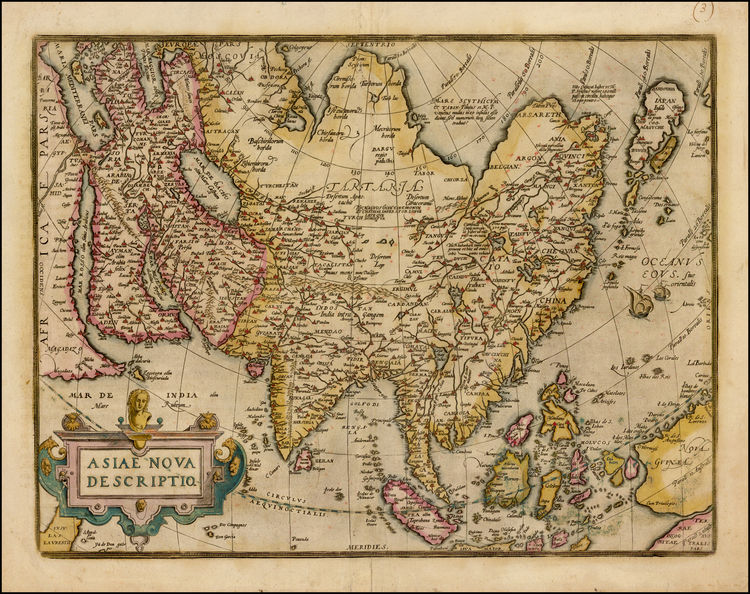
A beautiful full-color example of Ortelius’ map of Asia, from Ortelius’ Theatrum Orbis Terrarum, the first modern world atlas. Includes sailing ships and other embellishments.
The map is based upon Ortelius’s wall map of Asia, which in turn draws its cartographic data from Gastaldi and Albufeda. This is an example of the second edition of Ortelius’s map of Asia, the first having been published between 1570 and 1573. The first edition can be distinguished by the upper case “F” in Farfana at the top right corner, east of Japan, whereas the second edition (1574-1612) has a lower case “f”. Source: Antique Maps
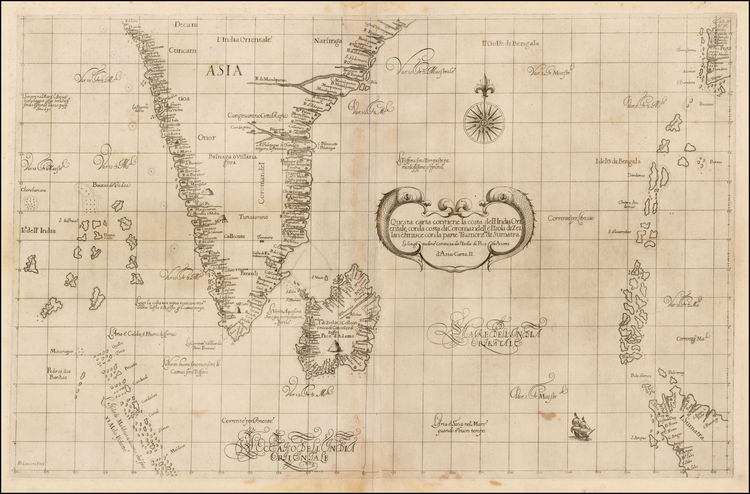
First state of Robert Dudley’s rare sea chart of India, Sri Lanka, the Maldives, northwestern Sumatra, the Andaman Islands, the Nicobar Islands and a part of Pegu (Myanmar).
The chart is elegantly engraved by Antonio Francesco Lucini with a Baroque dolphin motif at the cartouche and with the place names “L’India Orientale”, “Asia” and “Coromandell” at the east coast of the continent. The coast line of the continent is punctuated with numerous water courses, creating a lace-like effect.
The chart appeared in Dudley’s Arcano del Mare, one of the rarest and most highly sought-after sea atlases of the 17th Century. Dudley, an Englishman, produced this equisite work while living in Florence. Dudley, who was believed to have received some of his information directly from Sir Francis Drake, laboured for decades before finally releasing the first edition of this work when he was 73 years old. Dudley’s atlas is of the utmost importance, being the first sea atlas published by an Englishman and the first sea atlas to treat the entire world (not just Europe). It is also the first atlas to utilise the mercator projection on a uniform basis and included significant advances in “Great Circle” navigation (shortest circle around the Globe). Its inclusion of winds and currents was also a monumental first. Completed in manuscript form in 1636, it is among the most important works in the history of European cartography.
Robert Dudley (1574 – 1649) was the illegitimate son of Robert Dudley, 1st Earl of Leicester. In 1594, Dudley led an expedition to the West Indies, of which he wrote an account. In 1605, he tried unsuccessfully to establish his legitimacy in court. After that he left England and converted to Catholicism, taking up residence in Florence where he served the Grand Dukes of Tuscany in their efforts to rid the Mediterranean of piracy. There he worked as a noted shipbuilder and designed and published Dell’Arcano del Mare, the first maritime atlas to cover the whole world. He was also a skilled navigator, mathematician and engineer. In Italy, he styled himself Earl of Warwick and Leicester as well as Duke of Northumberland. He was a friend of Sir Francis Drake and relative of Thomas Cavendish, both of whom corresponded with Dudley and likely supplied some of the information for his atlas. Source: Antique Maps
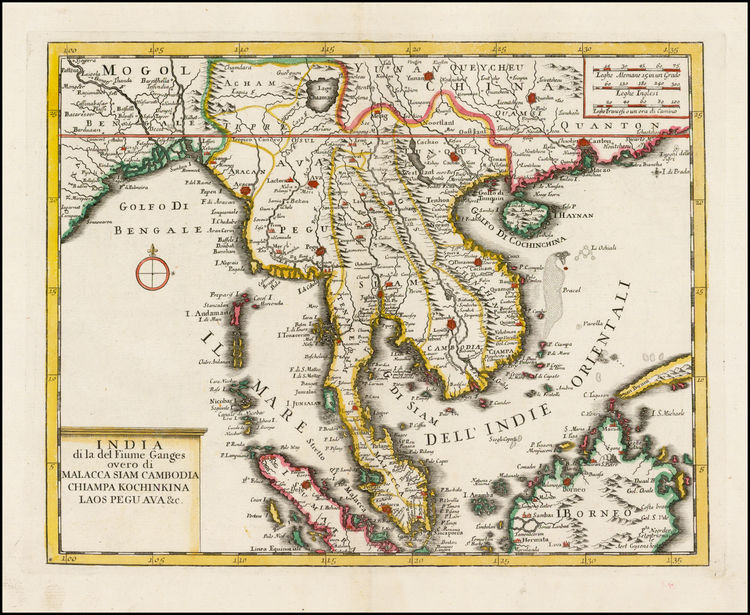
Scarce map of Southeast Asia and India, extending from the Gulf of Bengal to Canton province, from the Italian edition of Thomas Salmon’s Modern History: or, the present state of all Nations. … entitled Lo Stato Presente… published in Venice from 1740-1762. The maps are attributed to Tirion in Amsterdam, but were engraved in Venice by Albrizzi. Source: Antique Maps
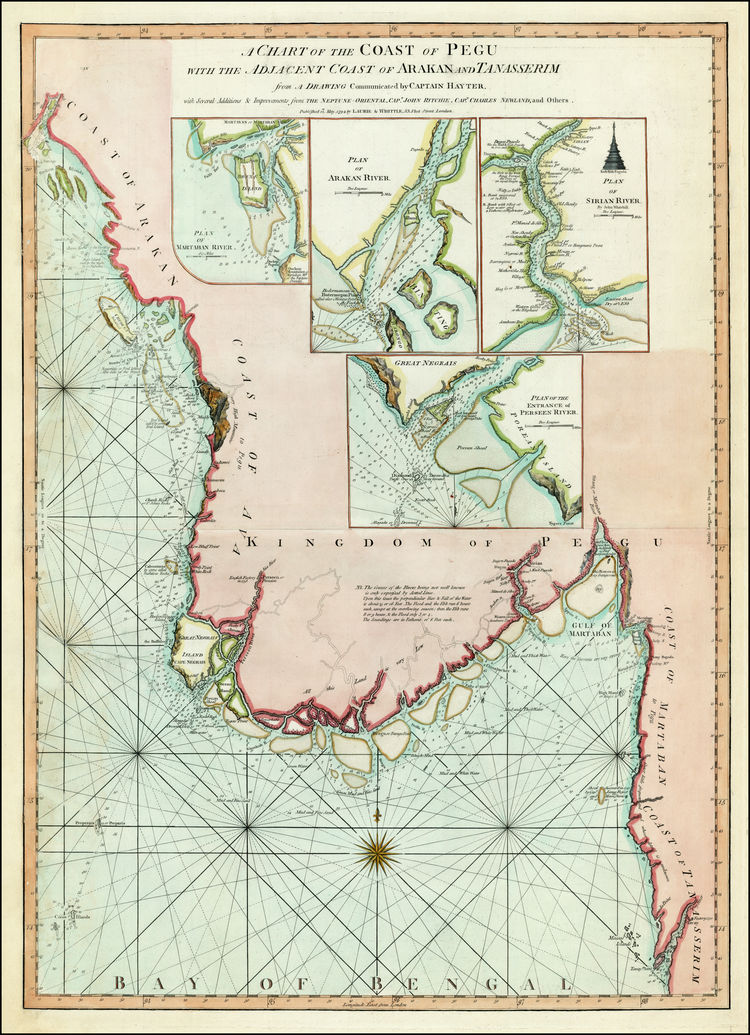
Detailed English sea chart showing the coast of the Burman Peninsula from the Bay of Bengal to the Gulf of Martaban. Details include rhumb lines, depths, and a compass rose. It includes four insets map of the Martaban River, the Arakan River, the Sirian River and the entrance of the Perseen River.
The chart appeared in The East-India Pilot, or Oriental Navigator and is based on the 1745 French “Neptune Oriental” by Jean Baptiste Nicolas Denis d’Apres de Mannevillette. The later English editions include additions by Captain Hayter, Captain John Ritchie and Captain Charles Newland. Source: Antique Maps
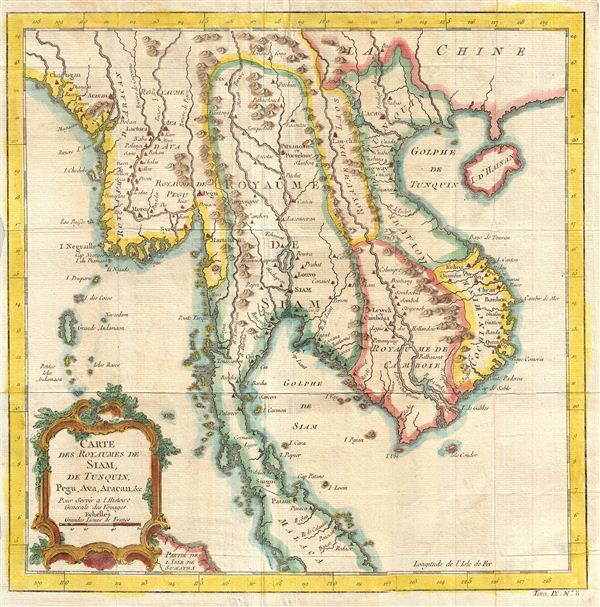
A beautifully detailed and engraved map from about 1750 of Southeast Asia. Centered on the Chao Phraya River, this map covers the region from the Kingdom of Aracan to the Gulf of Tonkin and from China to the Malay Peninsula, including the modern-day nations of Thailand, Cambodia, Laos, Vietnam, Burma, and Malaysia. Generally speaking this map represents a considerable advancement of mapping of the interior of Southeast Asia with numerous cities, fortifications, temples, and mountain ranges noted. It identifies the cities of Siam (Ayutthaya), Bangkok, Lau Chang (Luong Prabong), and Pegu. Many of the islands in the Gulf of Thailand, including Samui and the Andaman Islands are noted as well.
Drawn by Jacques Nicolas Bellin and published as plate no. 8 in volume 9 of the 1752 French edition of Abbe Provost’s L`Histoire Generale des Voyages. Bellin was one of the most important cartographers of the 18th century. With a career spanning some 50 years, Bellin is best understood as geographe de cabinet and transitional mapmaker spanning the gap between 18th and early 19th century cartographic styles. His long career as hydrographer and Ingénieur Hydrographe at the French Dépôt des Cartes et Plans de la Marine resulted in hundreds of high quality nautical charts of practically everywhere in the world. A true child of the enlightenment era, Bellin’s work focuses on function and accuracy tending in the process to be less decorative than the earlier 17th and 18th century cartographic work. Unlike many of his contemporaries, Bellin was always careful to cite his references and his scholarly corpus consists of over 1,400 articles on geography prepared for Diderot’s Encyclopedie. Bellin, despite his extraordinary success, may not have enjoyed his work, which is described as “long, unpleasant, and hard.” In addition to numerous maps and charts published during his lifetime, many of Bellin’s maps were updated and published posthumously. He was succeeded as Ingénieur Hydrographe by his student, also a prolific and influential cartographer, Rigobert Bonne. Source: Geographicus Rare Antique Maps
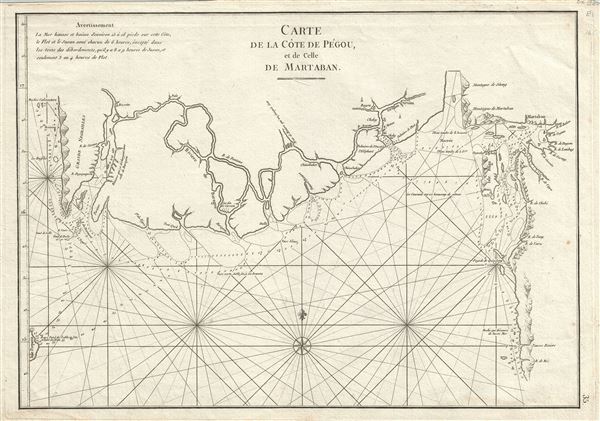
This is a scarce 1775 nautical chart or maritime map of the coast of Burma or Pegu or Myanmar. Composed by Jean-Baptiste d’Apres de Mannevillette, this map covers the Gulf of Martaban and the coast of Myanmar from the Ayeyarwady region east as far as the city of Martaban (modern day Mottama).
The basic cartography of this map dates to Mannevillette’s voyages as pilot for the Compagnie des Indies in the early 1700s. It was originally published in Paris in 1745. This may well be the 1745 edition, but it is unclear as no major changes seem to have been made between the first and second editions. In any case it was republished in 1775 in an expanded second edition of the Neptune Oriental.
The map offers rich detail including countless depth soundings, notes on the seafloor, commentary on reefs, rhumb lines, shoals, place names and a wealth of other practical information for the mariner. This chart was drawn by Jean-Baptiste d’Apres de Mannevillette for publication in the 1775 Neptune Oriental. Source: Geographicus Rare Antique Maps
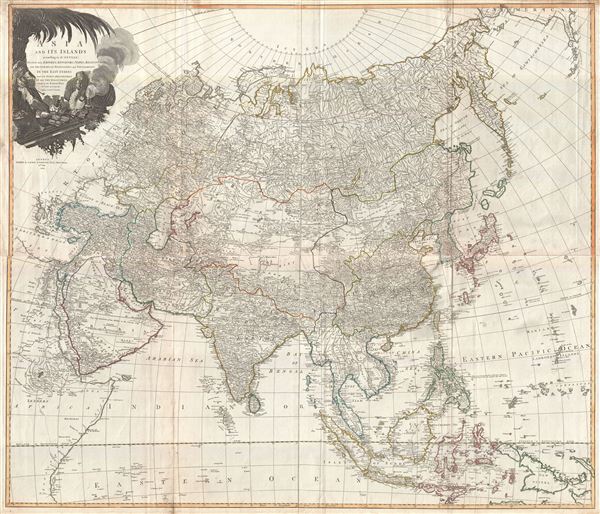
An absolutely stunning and monumental 1794 wall map of Asia by Laurie and Whittle. The map covers the entire continent of Asia, including Arabia, the Indian subcontinent, and the East Indies. Laurie and Whittle derived their basic cartography from the work of French mapmaker Jean Baptiste Bourguignon d’Anville. Throughout, countless cities, caravan routes, and geographical features such as islands, undersea shoals, oases, lakes, rivers, and mountains are identified. In Siberia and East Asia the mappings of Cook, Bering (including Behring Island, where he died) and Tschirikow are much in evidence.
This map is exceptionally interesting for its detailed work on Central Asia – a little-known and largely unmapped region at the time. The cartographer attempts to notate various historical sites throughout. For example in the Gobi desert, he identifies, albeit speculatively, the site of Karakarian or Karakorum, the ancient capital of the Mongol Empire, ‘Hereabout stood the City of Karakarin or Holin, the ancient Seat of the Monguls Empire.’ In a similar vein, he also identifies the ruins of various temples and palaces in Tartary.
Southeast Asia and the East India Islands are mapped in detail based upon old Dutch maps with only speculative commentary on the interior. Kingdoms of Pegu (Burma), Siam (Thailand), Tonkin and Chochin (Vietnam) and Camboja (Cambodia) and named. Further south, the Straits of Malacca are noted, as are the Straits of Singapore. Singapore Island, though not identified, is recognisable.
Korea or Corea is present, if misshapen, in roughly the correct location. The sea between Japan and Korea, whose name, the ‘Sea of Korea,’ ‘East Sea,’ or the ‘Sea of Japan,’ is here identified in favor of Korea (Gulf of Corea). Historically, Korea has used the term ‘East Sea’ since 59 B.C., and many books published before the Japanese annexed Korea make references to the ‘East Sea’ or ‘Sea of Korea.’ Over time, neighbouring and western countries have identified Korea’s East Sea using various different terms. The St. Petersburg Academy of Sciences referred to the East Sea as ‘Koreiskoe Mope’ or ‘Sea of Korea’ in their 1745 map of Asia. Other 17th and 18th century Russian maps alternate between ‘Sea of Korea’ and ‘Eastern Ocean.’ The 18th century Russian and French explorers Adam Johan von Krusenstern and La Perouse called it the ‘Sea of Japan,’ a term that became popular worldwide. Nonetheless, the last official map published by the Russians name the East Sea the ‘Sea of Korea.’ The name is currently still a matter of historical and nationalistic dispute between the countries.
An elaborate allegorical title cartouche in the upper left quadrant depicts a bearded, possibly Ottoman, trader with his goods, an incense burner, and a camel beneath a palm tree. This map was printed on four sheets which were then joined by the publisher. Published by Laurie and Whittle as plate nos. 26-27 in the 1797 edition of Thomas Kitchin’s General Atlas. Source: Geographicus Rare Antique Maps
